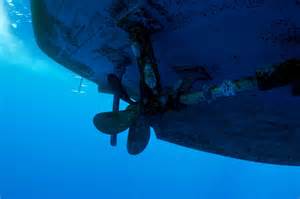
Protecting Metals Underwater Zincs From A to Z
The surveyor's report mentions that the boat's owner first noticed pitting on the shaft in the spring of 1987. The following season, "some degree of corrosion was evident" on the same outdrive, so the owner slapped on a fresh coat of paint and hoped for the best. Finally by 1989 the owner reported that he was unable to put the badly corroded outdrive in gear. The reason, after a brief investigation, had to do with the zinc, or lack of a zinc, which should have been acting as a "sacrificial anode" to protect the outdrive from galvanic corrosion. The last zinc, it seems, had been placed on the outdrive in 1985, an eternity when two dissimilar metals are immersed in saltwater.
The scientific explanation as to why galvanic corrosion occurs has to do with things like migrating electrons and electrical potential, but as a practical matter a boat owner should be aware that dissimilar metals, especially dissimilar metals left unprotected below the waterline, can cause horrendous corrosion problems to the least noble or "anodic" metal. The more dissimilar the metals (see chart), the more likely galvanic corrosion will occur.
Saltwater is a more effective electrolyte than freshwater, which means that galvanic corrosion takes place more quickly in saltwater. Galvanic corrosion can even occur when dissimilar metals are joined above the waterline. A sportfisherman in Florida, to use one dramatic example, had a Zamac (chrome plated zinc) fuel fill mated with a galvanized steel nipple below the deck. Saltwater washing over the fittings eventually destroyed the Zamac fitting and gasoline poured into the bilge. The boat exploded when the engine was started but fortunately nobody was hurt. (Claim #897640A)
Above the waterline, you'll want to avoid using Zamac fittings on critical parts like the fuel fill when a boat is used in saltwater. And whenever possible, avoid using dissimilar metals, especially metals that are far apart on the galvanic scale. If this isn't possible, which is frequently the case, you can often insulate one metal from another, for example, an aluminum mast from a stainless steel fitting, by using zinc chromate, polysulfide, a wood pad, or an inert insulating material like nylon or tufnol.
But below the waterline, when you have a stainless steel shaft and a bronze prop, which can't be isolated, you'll need a sacrificial anode. A zinc.
Shafts, rudders, outdrives, and trim tabs are likely candidates for zincs. Replacing these zincs is typically done annually, sometimes semi-annually. (The exception may be on boats kept in uncrowded, northern water where the water is colder and zincs typically last longer.) Zincs that are crumbling should be replaced in the Spring before launching and again midway through the season. Conversely, a zinc that doesn't appear to be worn at the end of the season is suspect and may contain impurities that kept it from doing its job. Before changing suppliers, make sure the zinc was snug against the metal it was supposed to have been protecting. A loose zinc won't do its job. Check also the metal beneath the zinc to make sure it is smooth and unpainted. Never paint a zinc.